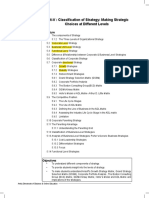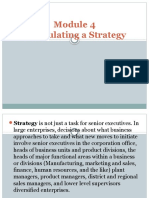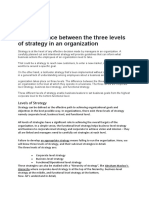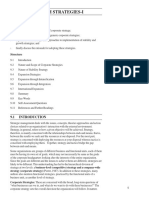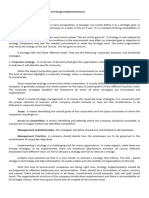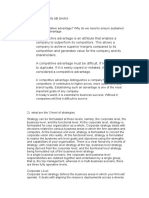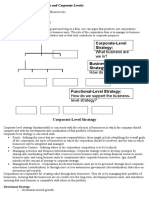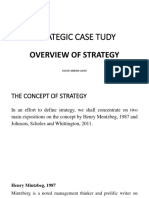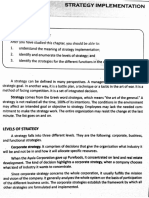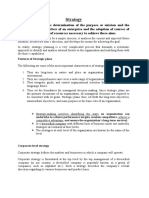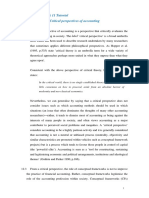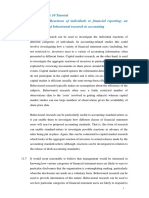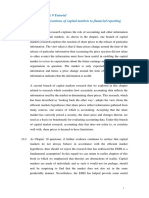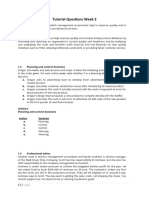0% found this document useful (0 votes)
46 views2 pagesTutorial Questions Week 3
The document provides solutions to three tutorial questions about strategy. It defines Porter's five forces model for industry analysis as including direct competitors, potential entrants, equivalent products, bargaining power of customers, and bargaining power of suppliers. It explains that strategy specifies how an organization matches its capabilities with marketplace opportunities to achieve objectives and differentiate itself. It also describes the three levels of strategy at CDU as corporate strategies addressing which businesses it will be in, business strategies focusing on competition in higher education, and functional strategies dealing with activities in production, finance, marketing, and human resources.
Uploaded by
julia chengCopyright
© © All Rights Reserved
We take content rights seriously. If you suspect this is your content, claim it here.
Available Formats
Download as DOCX, PDF, TXT or read online on Scribd
0% found this document useful (0 votes)
46 views2 pagesTutorial Questions Week 3
The document provides solutions to three tutorial questions about strategy. It defines Porter's five forces model for industry analysis as including direct competitors, potential entrants, equivalent products, bargaining power of customers, and bargaining power of suppliers. It explains that strategy specifies how an organization matches its capabilities with marketplace opportunities to achieve objectives and differentiate itself. It also describes the three levels of strategy at CDU as corporate strategies addressing which businesses it will be in, business strategies focusing on competition in higher education, and functional strategies dealing with activities in production, finance, marketing, and human resources.
Uploaded by
julia chengCopyright
© © All Rights Reserved
We take content rights seriously. If you suspect this is your content, claim it here.
Available Formats
Download as DOCX, PDF, TXT or read online on Scribd
/ 2







